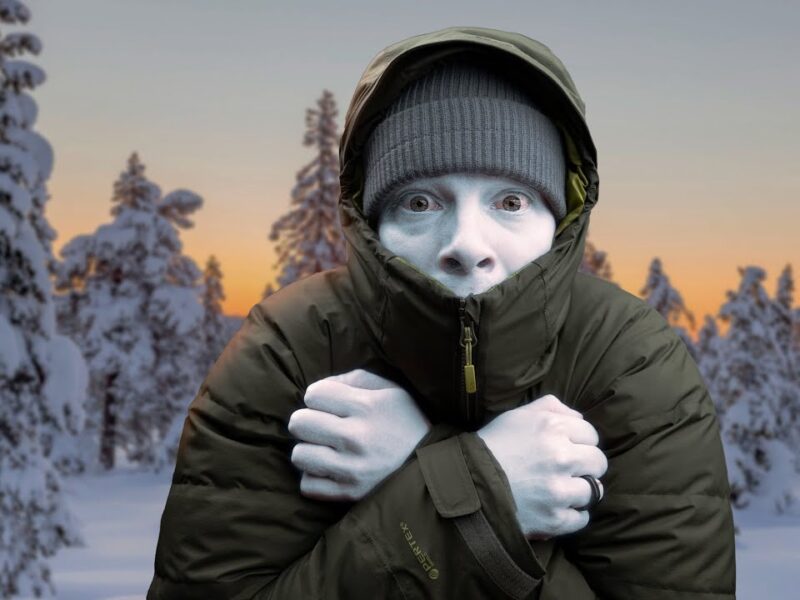Finland is known for its stunning landscapes, excellent education system, and unique cultural practices. For those considering moving to this Nordic country or simply curious about everyday life in Finland, there are several customs and daily routines that might come as a surprise.
Whether you’re planning to relocate or just visiting, understanding how daily life unfolds in Finland will give you a better sense of what to expect. Below are 15 essential things to know about everyday life in Finland.
1. You Must Wave to Catch the Bus
One of the first things you’ll notice in Finland is how buses operate. Unlike in many countries where buses stop at every designated stop, Finnish buses will only stop if you wave at them. This might seem strange at first, but it’s important to know—especially in cities like Tampere. If you’re at a bus stop and don’t wave, the driver might just pass you by. Similarly, once you’re on the bus, you must press the stop button to indicate that you want to get off. Otherwise, the bus will continue to the next stop without pause.
2. Lunch is Early
If you’re used to having lunch at 1 or 2 PM, Finland will be an adjustment. In Finland, lunch is typically eaten between 10 AM and 11 AM, which may seem unusually early to those coming from other cultures. Even by 12 PM, many people are done with lunch. Having a meal at 1 PM or later is considered late lunch. Dinner is often served between 4 PM and 6 PM, followed by an evening snack known as “iltapala.”
3. Tap Water is Safe to Drink
In Finland, tap water is safe, clean, and readily available. Unlike in many countries where bottled water is a big business, in Finland, it’s common to drink straight from the tap, even in public restrooms. Restaurants often provide water for free, and there’s usually no need to purchase bottled water. This is part of Finland’s commitment to sustainability and environmental consciousness.
4. Banks Don’t Send Alerts
One surprising aspect of Finnish banking is that you won’t receive alerts for transactions, such as when your salary is deposited. This is quite different from countries where SMS or email alerts are standard for bank transactions. If you want to check your balance or verify payments, you’ll need to log into your bank’s online system or use a mobile banking app.
5. Sundays are Quiet
Sundays in Finland are typically reserved for rest and family time. Many shops are either closed or open only for a few hours. By 4 or 6 PM, most places are shut for the day. In contrast to the hustle and bustle of Sundays in other countries, Finland’s Sundays are calm and relaxed, offering a perfect opportunity to unwind.
6. Wide Roads and Bike Lanes
In Finland, you’ll notice that roads are quite wide, not only to accommodate cars but also to provide designated lanes for bicycles and pedestrians. Cycling is a popular mode of transportation, especially during the summer. There are clear distinctions between pedestrian and bike lanes, and it’s important to stick to your lane. Walking on the bike lane, for instance, might annoy a cyclist. The infrastructure is designed to promote walking and biking, keeping people active and healthy.
7. No Traffic Congestion
One of the best aspects of everyday life in Finland is the lack of traffic congestion. Except for Helsinki, most cities experience minimal traffic, even during rush hours. The country’s public transportation system and well-planned road networks ensure that if a commute is expected to take 20 minutes, it will likely take exactly 20 minutes. This predictability makes commuting stress-free, unlike the heavy traffic jams experienced in many other countries.
8. Public Holidays Mean Closed Shops
On public holidays, expect many businesses to close or operate with limited hours. Finland celebrates several holidays like May Day, Independence Day, and Midsummer, where businesses and government offices may be closed, and public transportation schedules are often reduced. During these holidays, locals typically spend time with their families or enjoy outdoor activities.
9. There’s No Word for “Please” in Finnish
The Finnish language doesn’t have a direct translation for the word “please.” Instead, politeness is conveyed through the tone of voice or by adding “kiitos” (thank you) at the end of a request. This lack of a specific word for “please” can take some getting used to, but rest assured, Finns are not being rude; they’re simply communicating in their culturally polite way.
10. Quiet Hours Start at 10 PM
In Finland, residential areas adhere to a strict noise policy. After 10 PM, making loud noise is frowned upon. If you’re hosting a party or playing loud music past this time, neighbors might knock on your door to ask for quiet. If noise continues, don’t be surprised if the police show up—this is completely normal, and police are usually quick to respond to noise complaints. Finns value their peace and quiet, especially at night.
11. No Shoes Indoors
One common custom in Finnish homes is to remove your shoes at the door. This is not just a suggestion; it’s expected. Homes are kept very clean, and wearing shoes inside is considered rude. Typically, there’s a designated area near the entrance where guests and residents can leave their shoes, ensuring that the home stays tidy, especially during snowy or rainy months.
12. Sauna is a Way of Life
The sauna holds a special place in Finnish culture. Nearly every home or apartment building has access to a sauna, and it’s a regular part of everyday life. Saunas are used to relax, socialize, and cleanse both body and mind. For many Finns, a trip to the sauna is a weekly ritual. When invited to a sauna, it’s considered polite to accept, and you’ll quickly learn that it’s not just about sweating—it’s a deeply ingrained part of Finnish identity.
13. Public Transportation is Efficient
Finland’s public transportation system is incredibly efficient and reliable. Whether you’re taking a bus, tram, or train, you can expect punctual service with minimal delays. Public transportation is widely used, and schedules are well-maintained, making it easy to get around, especially in larger cities like Helsinki, Tampere, and Turku. Additionally, Finland places a strong emphasis on eco-friendly transportation, with many locals opting for cycling or walking.
14. Recycling and Sustainability are Priorities
Finland is one of the world’s leaders in environmental sustainability. Recycling is a key part of everyday life, and Finns take it seriously. In most homes, you’ll find separate bins for various types of waste, such as plastic, glass, and compost. Finland’s government has implemented several initiatives to reduce waste and promote recycling, and this is reflected in the way people live their daily lives.
15. Finnish Weather: Embrace the Cold
One thing you’ll need to adapt to quickly in Finland is the weather. Winters are long, dark, and cold, with temperatures often dipping well below freezing. However, Finns are well-prepared for this with heated homes, proper winter clothing, and outdoor activities that make the most of the snow. Summer is short but beautiful, with long daylight hours that locals make the most of by spending time outdoors, enjoying nature, and attending festivals.
Final Thoughts
Everyday life in Finland is shaped by a combination of unique cultural practices, a deep respect for nature, and an emphasis on efficiency and tranquility. Whether it’s waving for a bus, enjoying an early lunch, or relaxing in a sauna, Finland offers a way of life that is both structured and serene.
Understanding these 15 aspects of Finnish daily life will not only help you adjust if you’re planning to move there but also deepen your appreciation for this beautiful and peaceful country.


